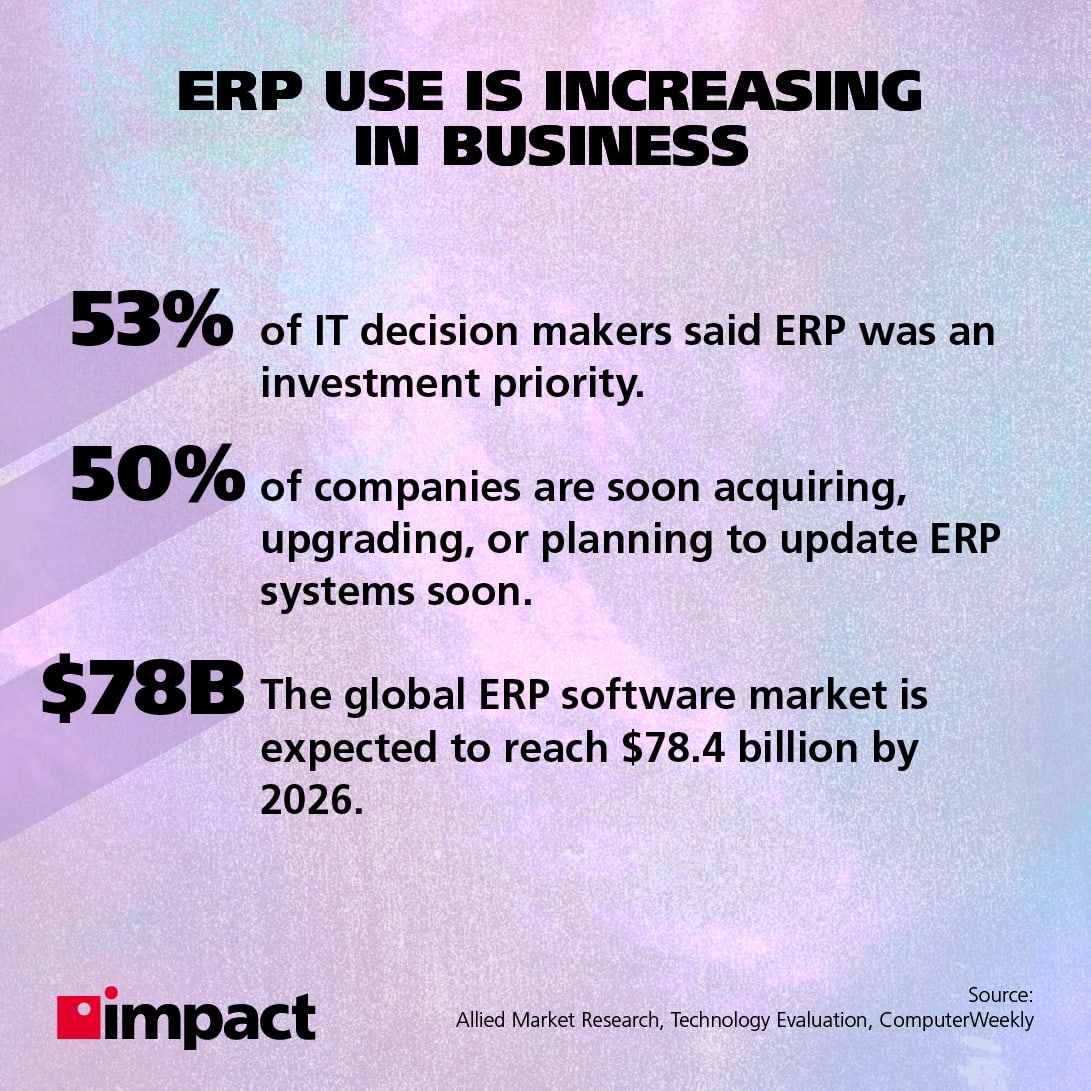Product innovation is the primary driver behind the success of the majority of today’s SMBs.
What do we mean by this, exactly? Well, if you consider the impact that digital transformation has had on the business world, time and again, it’s the businesses which have improved or established their digital maturity that are reaping the rewards.
Why is this? Simply put, mature companies have access to the information they need because it’s afforded to them by the technology they’ve implemented. In other words—they can utilize their data in ways not previously possible.
45% of high-maturity companies achieved net revenue growth above industry averages, compared to 15% of companies not rated as highly mature.
Today, we’re going to be taking a look at the five keys to great product innovation, and how technology facilitates the process from start to finish.
1. Clear Process for Making Decisions
How is decision making undertaken in your organization? Is it a centralized, top-down approach? Or a decentralized approach which relies on designated project managers?
Centralized approaches typically favor businesses that are smaller in size and have a limited number of products or services.
Decentralized approaches are better for companies that have a lot of varying services or departments, but this can unfortunately lead to silos and communication issues.
In the context of digital transformation, communication and collaboration are two key pillars of any strategy for tech implementation—one of the reasons so many organizations are using UCaaS platforms today.
Related Post: What Is Unified Communications as a Service (UCaaS)?
Communication platforms are popular because they aid decision making and project management, allowing managers to establish a decision-making structure that can incorporate every relevant stakeholder in the business with very little difficulty.
What this means in effect is that the centralized versus decentralized approach—and their various pros and cons—can be mitigated in favor of a strategy that engages every stakeholder in real-time; all the way to the C-suite if necessary.
This is what would be referred to as a partially centralized approach, which utilizes the new communication lines between departments to maintain the centralized mindset while removing the possibility of silos developing from a lack of communication.
2. Empower Innovation
Do teams and departments have the technology, solutions and means to be able to innovate as successfully as they should?
It’s not uncommon within a business to have teams working on product innovation projects that are short-term and long-term—the reason R&D departments exist at all.
Of course, for SMBs, their immediate goals are the most important, but the point still stands—are short- and long-term ambitions being accommodated by the existing tech that is being afforded to employees?
If a product is being designed and brought to market, how are project managers being empowered by the current setup?
For example, do they have the ability to accurately and definitively make decisions based on analysis of your data for the benefit of the product being developed?
Technologies like business intelligence (BI) have revamped the process of product innovation by allowing organizations to examine their data (all of which is already present in the company) in detail so they can make a more informed decision.
With successful organizations, only 40% base their decisions on gut feeling. For less successful enterprises, this number jumps to 70%.
Companies that want to innovate should be in no doubt about the ability for analytics to provide an extremely useful resource for determining the direction of developing their products and services.
Related Post: The Benefits of Business Intelligence: Utilizing Analytics for Strategy
This doesn’t just extend to analytics or business intelligence either, but to everything. Just as collaboration is important for making decisions, it’s also important for teams to communicate across the organization and establishing a means for uninhibited information flow is a crucial part of that.
3. Establish Phases Driven by Outcomes
Product innovation has been impacted to a large degree by the emergence of business agility—a concept that has taken precedence over the last few years as a result of an increased focus on new tech adoption by SMBs.
Business agility, by using solutions like analytics platforms, allows companies to change an offering rapidly based on new actionable data they have.
This also has the adverse effect of making it a little more difficult for businesses to guide the progress of rapid product innovation without tripping themselves up by making a change that wasn’t previously accounted for.
To counteract this, organizations should be careful to establish clear and easy-to-understand outcomes for each phase, from design to launch, in order to stop the project from getting bogged down.
It’s also important to make use of the benefits of business agility and other solutions, as they allow for the introduction of ideas that may have gone unnoticed otherwise.
Businesses must balance the iterative nature of business agility and disruption that can be brought through technology with clear deliverables for a project.
4. Measure Performance Against Relevant Metrics
To measure the success of a product, appropriate metrics must be defined that correctly align with the stated goal of the project.
These should be easy to assess and consistent with the original vision of the product. If the product is an app to help reduce time spent entering data by employees, then the metrics that should be examined would relate to the productivity of relevant employees. If it’s an app update that automates the customer billing process, then the metric would be customer satisfaction.
How do digitally mature businesses do this? Typically through an ERP platform, which unifies all the data and information within your business into one system, allowing for a more thorough approach to data analysis than is possible with an organization which has discordant systems.
Related Post: Infographic: How Not Implementing an ERP Is Costing Your Business
5. Manage Funding
Investment in new technologies has always been a difficult proposition for SMBs.
Many executives, owners and managers have been burned in the past by tech projects that failed, and it can be difficult to overcome that resistance moving forward.
Take cybersecurity as an example; the vast majority of decision makers who work in IT departments indicate that they are at risk.
96% of IT decision makers believe their organizations are susceptible to external cyberattacks.
Yet, despite this, 71% of businesses say they are not prepared for this risk—it’s simply a matter of funding.
This is the same of any technology adoption; and though nearly half of all organizations plan on increasing their tech spend, the purse strings are tighter than ever and where to invest is as significant a question as what to invest in.
In the case of product innovation, the primary solutions that are going to drive a project further will likely relate to analytics solutions for the purposes of better understanding your market; communication tools for a more cohesive team that can work across all areas of the company; and cloud solutions to collaborate effectively for much the same reason.
Bottom Line
Product innovation is a different beast to what it once was. The introduction of new technologies into the workplace has completely upended the process for product innovation, as organizations rely (justifiably) on these solutions to help guide the development of their new product or service.
Moving forward, businesses should consider whether they have the right technology in place for their teams for the innovation of their products.
If they don’t, they might consider reassessing how their tech budget is being used and whether it’s sufficient enough to meet their ambitions for product innovation.
In light of recent events, many organizations have found themselves playing catchup, trying to implement makeshift cloud solutions to make up lost ground while their workforces see drastic transformations.
To find out more about how the cloud can ensure your business is in good shape for the future, download our eBook, “Which Cloud Option Is Right For Your Business?”

